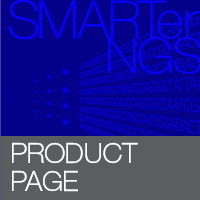B cells are an essential part of the adaptive immune response, functioning via B-cell receptors (BCRs) expressed on their surface. Each B cell expresses a different BCR that allows it to recognize molecular patterns in pathogens. Development of BCRs (Figure 1) is a multistep process in which a progenitor cell undergoes V(D)J recombination in the germline followed by somatic hypermutation (SHM), resulting in a final product with a specific CDR3 (complementarity determining region 3) sequence in the hypervariable region of the immunoglobulin (Ig). These molecular events facilitate receptor diversity and the generation of heavy chain isotypes. Upon exposure to a stimulus or stimuli, the lambda and kappa light chain genes of the BCR undergo rearrangements to generate different light chain isotypes from the same B-cell clone.

Figure 1. BCR development. The progenitor cell undergoes recombination of V, D, and J segments in the germline, which generates two identical heavy chains. Recombination of V and J segments generates two identical light chains. Random nucleotide additions or deletions at the junctions of the V, D, and J segments provide additional diversity. Furthermore, B cells activated by immune responses undergo somatic hypermutation (SHM), in which additional point mutations are introduced.
Understanding the profiles of BCRs, (i.e., sequencing the full-length CDR3 regions to determine the diversity of receptors and the clonotypes, defined by expression of specific heavy and light chain gene segments) can not only aid in gaining insights into the adaptive immune response in healthy individuals, but also in those with a wide range of conditions, including infectious diseases, allergies, autoimmune disorders, cancers, and aging (Yaari & Kleinstein, 2015).
Next-generation sequencing (NGS) approaches for profiling B-cell repertoires have provided valuable insights into the adaptive immune response and antibody engineering. There are two major NGS approaches used in profiling B-cell repertoires—multiplex PCR or 5' RACE. While the multiplex PCR approach allows for amplification of multiple BCR genes within one reaction, challenges with sensitivity, specificity, and biases in amplification of certain sequences can lead to difficulties in accurate identification of isotypes. On the other hand, the 5'-RACE method reduces variability and allows for priming from the constant regions of the BCR heavy or light chains. However, the burden of designing optimized primers falls onto the individual researcher.
The SMARTer Mouse BCR IgG H/K/L Profiling Kit (SMARTer mouse BCR kit) solves these problems by combining the benefits of 5' RACE with gene-specific amplification (Figure 2) to provide a highly sensitive and reproducible method for profiling B-cell repertoires. The high sensitivity of the kit accurately identifies top B-cell Ig clonotypes and reliably assigns isotype in a majority of cases, based on sequencing of the gamma (G) heavy chain and the kappa (K) and lambda (L) light chains.

Figure 2. SMARTer Mouse BCR IgG H/K/L Profiling Kit workflow. Panel A. First-strand cDNA synthesis utilizes a dT-primed (BCR dT Primer) and MMLV-derived SMARTScribe Reverse Transcriptase (RT), which adds non-templated nucleotides upon reaching the 5' end of each mRNA template. The BCR oligonucleotide anneals to these non-templated nucleotides and serves as a template for the incorporation of an additional sequence of nucleotides into the first-strand cDNA by the RT. The BCR oligonucleotide contains sequence from the Illumina Read Primer 2, serves as a primer-annealing site for subsequent rounds of PCR, and ensures that only sequences from full-length cDNAs undergo amplification. Then, the library goes through a final bead clean up and the library is ready for sequencing on an Illumina MiSeq sequencer. Panel B. The first PCR uses the first-strand cDNA as a template and includes a forward primer with complementarity to the Illumina Read Primer 2 sequence (BCR Primer 1V), and a reverse primer that is complementary to the constant (i.e., non-variable) region of the BCR G heavy chain (mBCR Primer 1H), K light chain, or L light chain (mBCR Primers 1K or 1L). The chains are amplified in separate reactions. By priming from the Read Primer 2 sequence and the constant region, the first PCR specifically amplifies the entire variable region and a considerable portion of the constant region of the G K, or L chain cDNA. The second PCR takes the product from the first PCR as a template and uses semi-nested primers (mBCR Primers 2H, 2K, or 2L) to amplify the entire variable region and a portion of the constant region of BCR heavy or light chain cDNA. As in PCR 1, the BCR subunit chains are amplified in separate reactions.
The kit leverages SMART technology (Switching Mechanism at 5' End of RNA Template) and employs a 5'-RACE-like approach to capture complete V(D)J variable regions of BCR transcripts. First-strand cDNA synthesis is dT-primed, and the template-switching activity ensures that only sequences from full-length cDNAs undergo PCR amplification (Figure 2). Two rounds of PCR are then performed in succession to amplify cDNA sequences corresponding to the variable regions of the BCR chain transcripts (Figure 2, Panel B). The first PCR reaction uses first-strand cDNA as a template to amplify each BCR Ig transcript (G, K, or L) in a separate reaction. Then, the first PCR product is used as the template with semi-nested primers to amplify the entire variable region and a portion of the constant region. Following post-PCR purification, size selection, and quality analysis, the library is ready for sequencing on an Illumina MiSeq® sequencer using the 600-cycle MiSeq® Reagent Kit v3.






